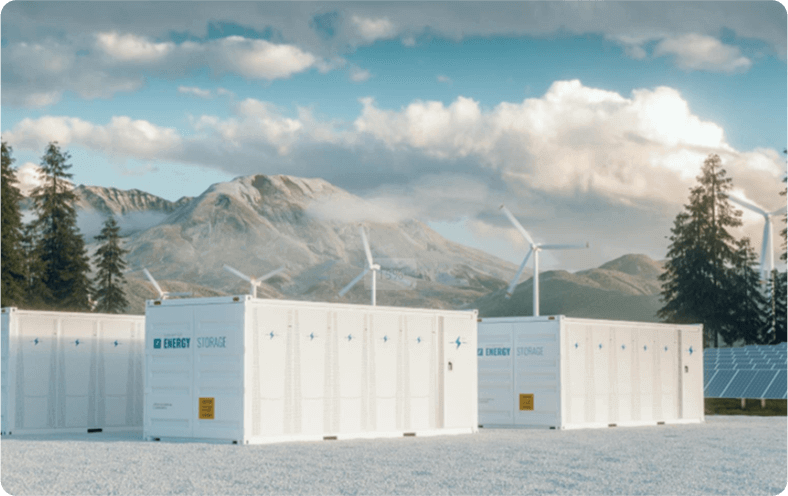Jul. 29, 2025
Energy storage systems involve multiple critical aspects, among which the architecture and core components—such as the Energy Management System (EMS)—are paramount. Let’s delve into the realm of energy storage and examine the pivotal role of EMS within these systems…
The Industry Chain of Energy Storage Systems
To gain a holistic understanding, let’s first dissect the upstream and downstream segments of the energy storage system industry chain, which includes:
--Raw materials (e.g., lithium)
--Battery cell manufacturing
--Battery pack assembly
--Production of Power Conversion Systems (PCS)
--Development of Energy Management Systems (EMS)
--System integration
--Project development and operation
This chain clarifies the position of EMS in the broader energy storage ecosystem.
Core Equipment in Energy Storage Systems
An energy storage system is composed of several key pieces of equipment, each with distinct functions:
--Battery Management System (BMS)
--Power Conversion System (PCS)
--Energy Management System (EMS)
--Energy storage batteries
Architecture of Battery Energy Storage Systems
Each component plays a unique and indispensable role:
--BMS functions as the "sensory system," responsible for monitoring, evaluating, protecting, and balancing batteries.
--PCS acts as the "executor," controlling battery charging and discharging while converting between alternating current (AC) and direct current (DC).
--EMS serves as the "decision-maker," tasked with data collection, network monitoring, and energy dispatching.
A Deep Dive into EMS
The Energy Management System (EMS) is the decision-making core of an energy storage system, often hailed as its "brain."
Definition and Role of EMS
EMS, short for Energy Management System, refers to an integrated set of software and hardware designed to monitor, control, analyze, and optimize energy systems. In the context of energy storage, it not only manages storage devices but also communicates with subsystems like BMS and PCS.
The core functions of EMS include:
--Optimizing dispatch strategies for storage devices
--Ensuring safe, stable, and efficient system operation
--Controlling battery charging and discharging processes
--Real-time monitoring of system status
Architecture of EMS
The EMS architecture typically comprises four layers:
Equipment Layer: Includes battery storage cabinets, BMS, PCS, auxiliary control systems, and smart meters.
Communication Layer: Handles connections, protocols, and data transmission. It commonly uses RJ45 and RS485 bus connections, with protocols such as Modbus, IEC104, and IEC61850.
Information Layer: Consists of caching middleware, databases, and servers, responsible for data processing and storage.
Application Layer: Provides user interfaces (e.g., mobile apps, web pages) for monitoring, control, and data analysis.
EMS in Different Application Scenarios
EMS requirements vary across different energy storage scenarios, with distinct demands for grid-side storage versus commercial and industrial storage.
EMS for Grid-Side Storage
Traditional EMS systems are primarily designed for large-scale grid-connected energy storage. They require more complex functionalities, including:
--Advanced control algorithms
--Strong grid integration capabilities
--Compliance with utility regulations and standards
--Ability to participate in ancillary services (e.g., frequency regulation, voltage support)
EMS for Commercial and Industrial Storage
For commercial and industrial applications, EMS requirements are relatively simplified:
--Basic energy management functions
--Setting flexible charging and discharging schedules
--Local energy management without the need for grid dispatch integration
--Ensuring safe operation and battery balancing
--Ultra-fast response times (at the millisecond level)
Conclusion
Energy storage EMS systems are designed to handle the massive monitoring data and diverse operational needs of storage projects. They offer integrated data collection, storage, monitoring, and control through a unified platform. Practical engineering projects have demonstrated that these systems deliver high reliability, safety, and stability.
As a vital component of energy storage systems, EMS maximizes their efficiency and effectiveness. Thus, it must continuously evolve to keep pace with the rapidly advancing energy storage technology landscape.
Frequently Asked Questions (FAQ)
Q: What is the relationship between BMS and EMS?
A: BMS operates at the battery-level, focusing on individual battery cells or packs, while EMS manages the entire microgrid or energy storage system. BMS is a subsystem of EMS, and they maintain an interactive relationship. In smaller-scale storage systems, a standalone BMS may suffice without a full-fledged EMS.
Q: How do BMS and EMS communicate?
A: BMS uploads real-time battery data (e.g., voltage, current, state of charge (SOC), temperature) to EMS. In return, EMS sends operational parameters and settings to BMS to ensure battery protection and optimal management.
Q: What are the benefits of integrating both EMS and BMS?
A: The combination of EMS and BMS offers multiple advantages:
--Early safety warnings and precise fault diagnostics
--Resolution of internal battery imbalance and inconsistency issues
--Comprehensive energy management and optimization of overall system performance
Latest News
Related Solutions
Residential Energy Storage System Solutions
+ -SolarEast's residential energy storage system, designed for homes, villas, sunrooms, and communities, stores solar energy to reduce power bills and ensure reliable day-and-night energy use.
Utility Scale Energy Storage Solutions
+ -Optimize Energy Efficiency. Cut Costs. Embrace Sustainability. SolarEast Battery Energy Storage Systems provides customized BESS solutions for industrial parks, farm energy storage solutions, and C&I Energy Storage System to reduce peak demand charges, stabilize power supply, and enable smart energy management. Our industrial and commercial energy storage systems cover a full range of products from 30kWh to 5MWh, including small integrated energy storage devices and large customized energy storage solutions, which are widely used in microgrids, off-grid power supply, peak cutting and valley filling, demand side management and backup power.
Commercial & Industrial Storage System Solutions
+ -SolarEast BESS is a supplier of lithium iron phosphate batteries, microgrid energy, large-scale battery storage, grid-scale energy storage, high-voltage energy storage batteries, and energy storage solutions. SolarEast solar batteries and solutions are recognized and welcomed by customers worldwide. Our targets are focused on the following markets: industrial and commercial energy storage systems, Telecom Energy Storage Systems (TESS), transportation/utility energy storage, and large/medium/small backup power systems.


